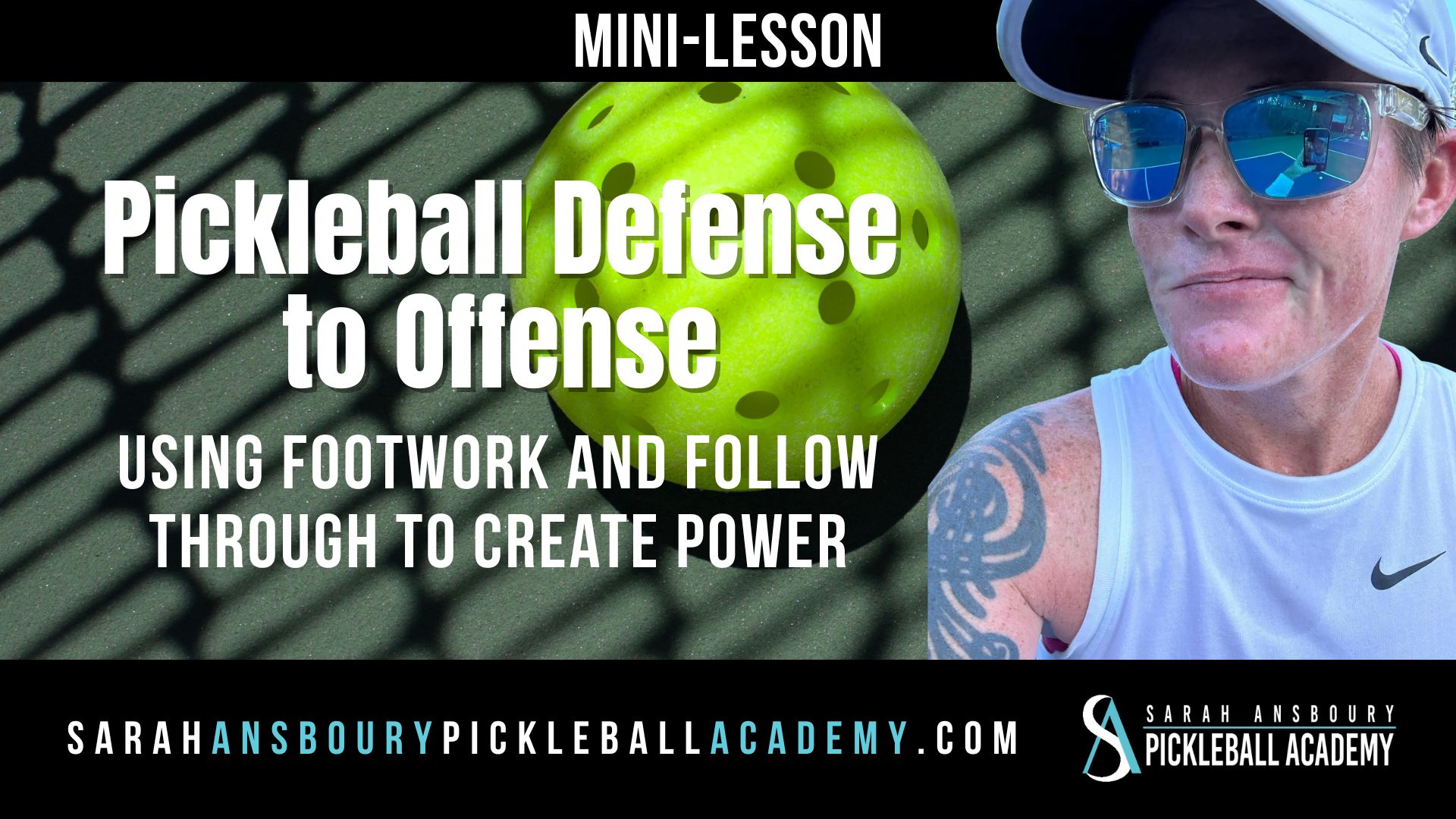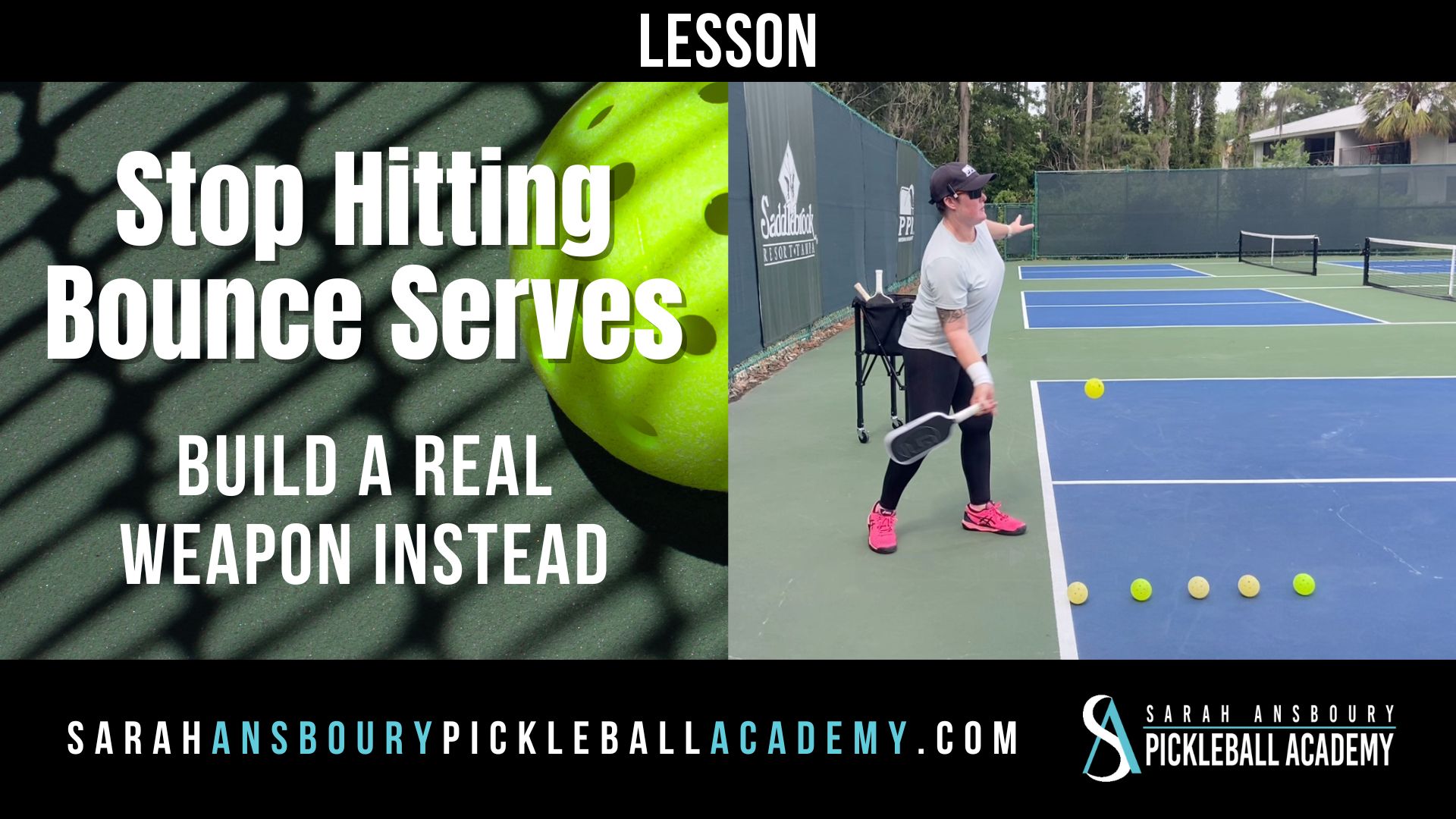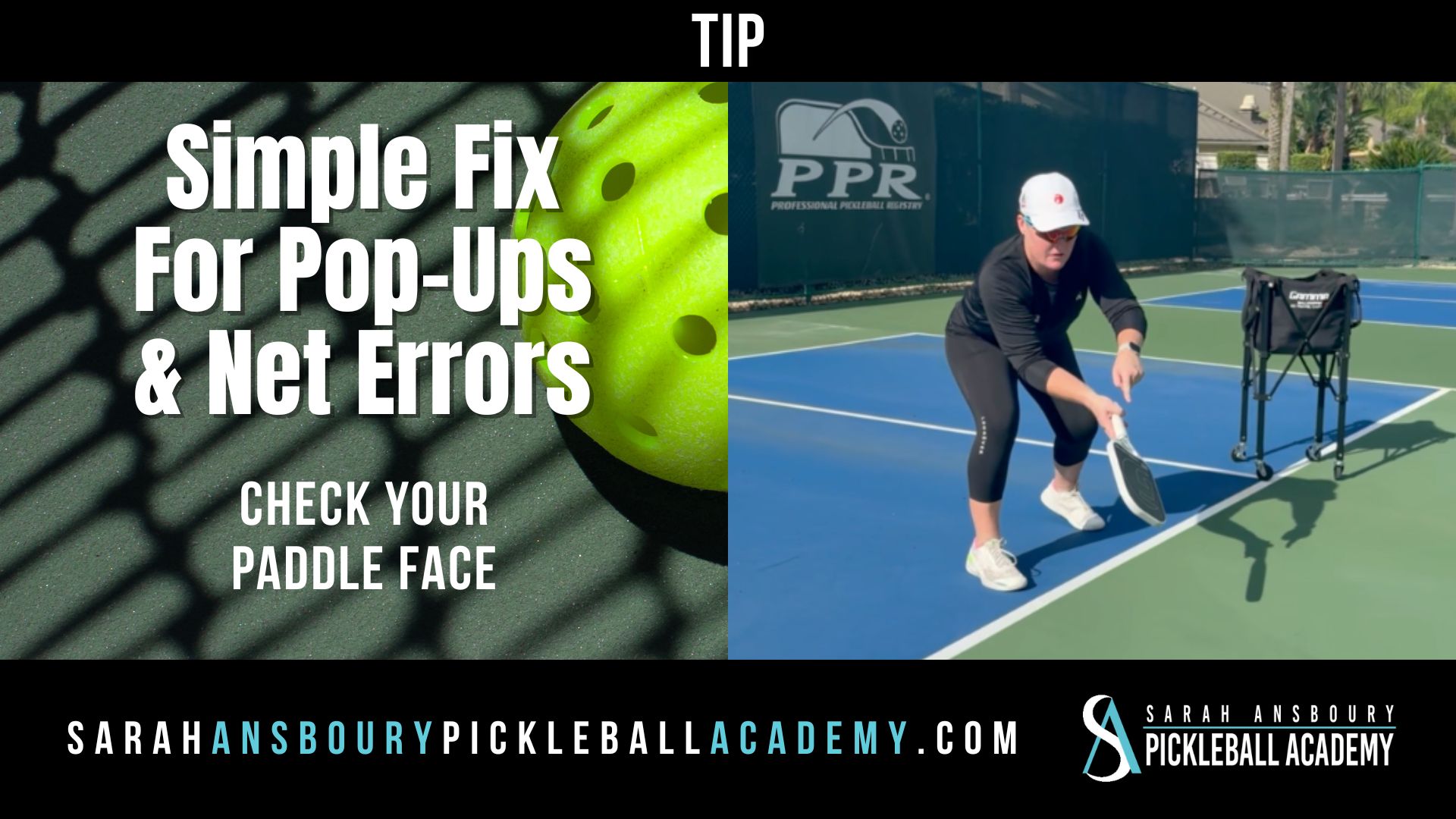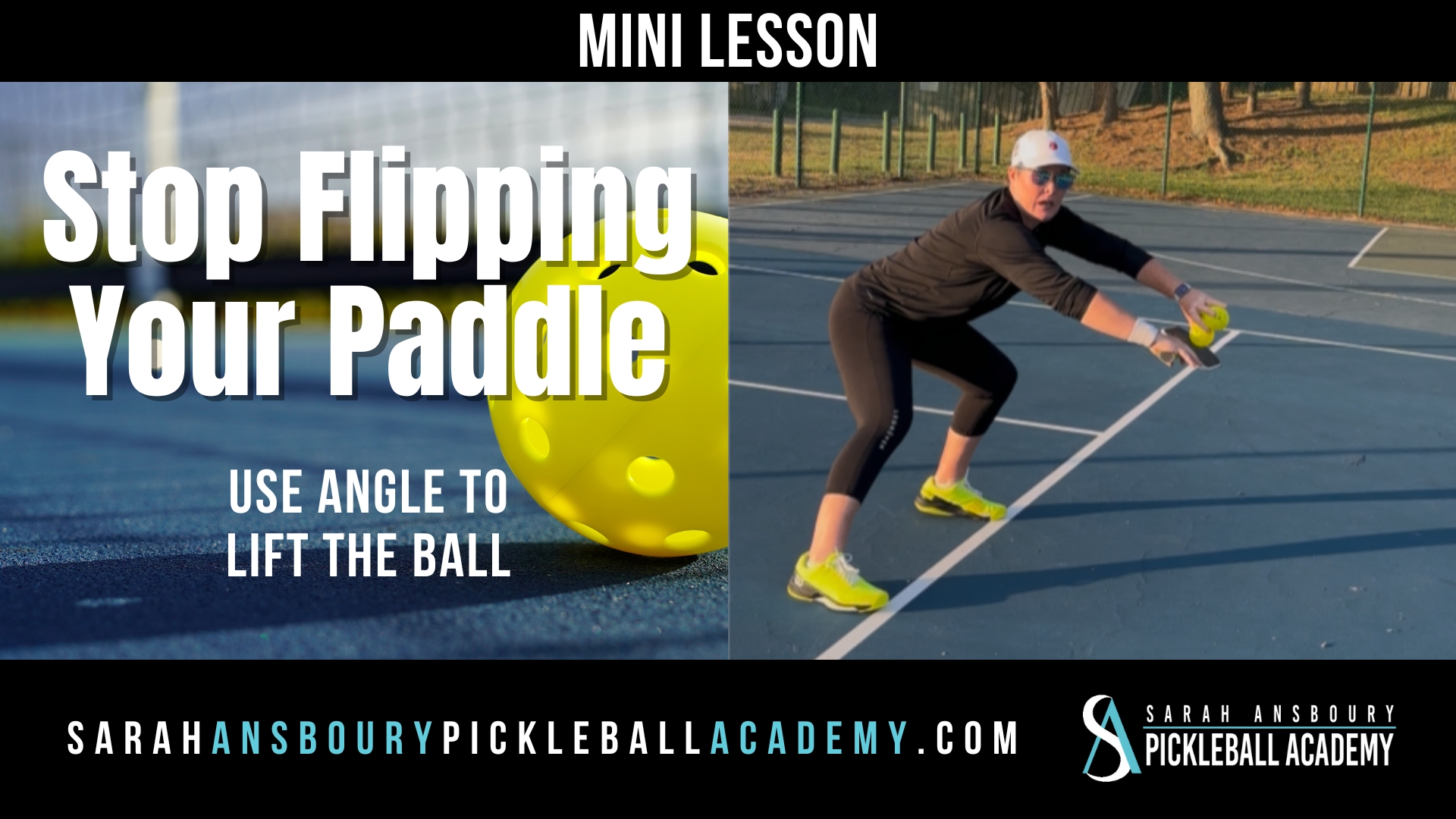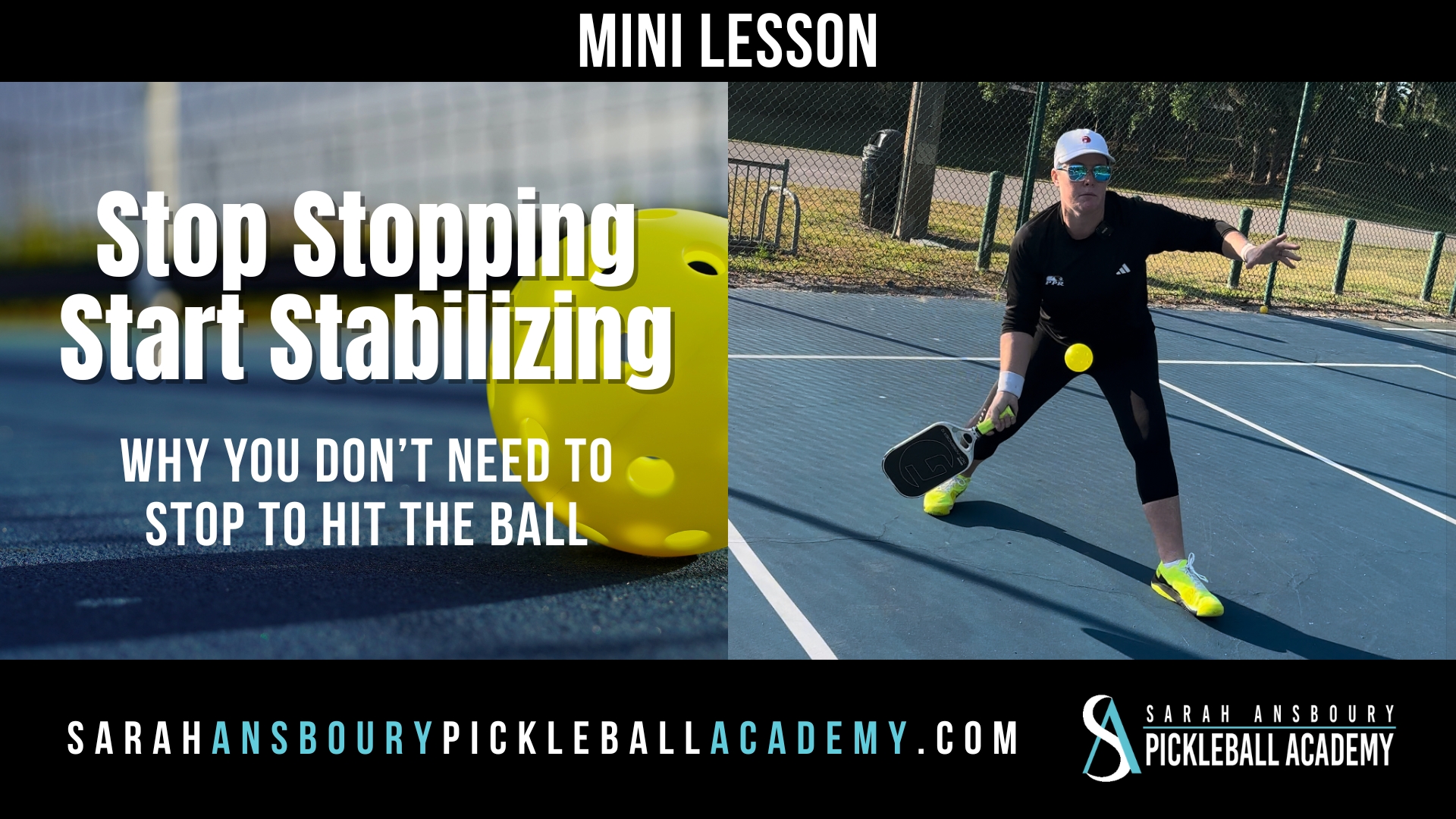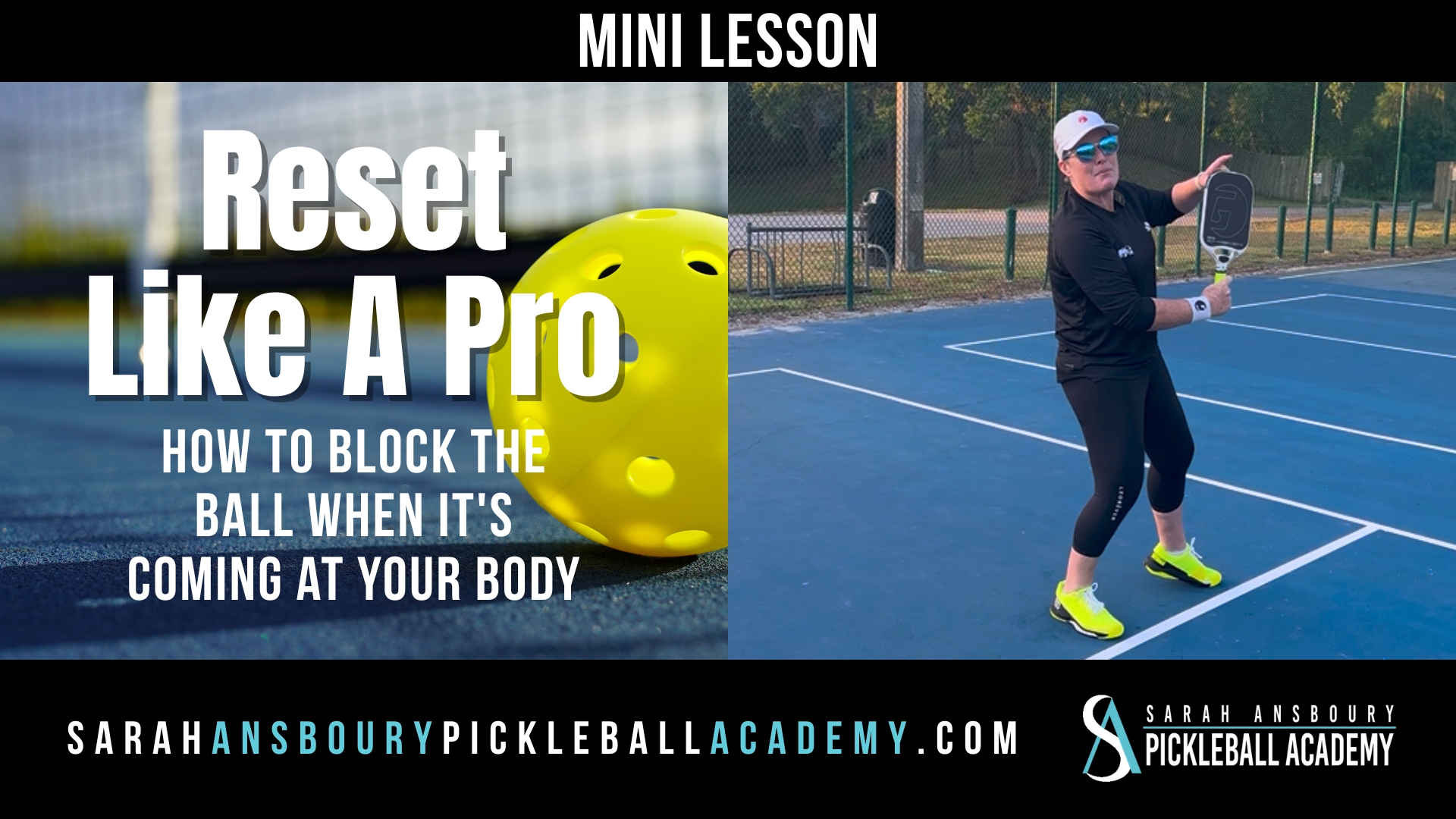One of the biggest differences between an advanced and intermediate pickleball player is where they hold their paddle. I want you to visualize a pickleball bull’s eye on your chest.

When I am Teaching
One of the things I have learned is that an instructor has to learn a dozen different ways to express the same lesson. I have learned this is especially true as it relates to paddle position:
- I have talked before about keeping your paddle up by tracking the ball with your paddle…in fact, I have an entire YouTube video on paddle tracking.
- I have suggested that proper paddle position is the best way to anticipate your opponents shot.
- I have written about the importance of the neutral position relative to keeping the ball low.
As a full-time pickleball instructor, I frankly would get a bit bored saying the same thing over and over. More importantly, I have found what makes sense to one student may be misunderstood by another. So I keep working to find ways to express this important pickleball truth.
Pickleball Bullseye…Laser Tag
Between shots, you must keep your paddle out in front of your body and positioned at sternum high. To keep your paddle  up, visualize a bullseye on the middle of your chest. If your pickleball bullseye can be seen by the folks on the other side of the net, you are vulnerable and you are not in a “ready” position. You must protect your pickleball bullseye at all times.
up, visualize a bullseye on the middle of your chest. If your pickleball bullseye can be seen by the folks on the other side of the net, you are vulnerable and you are not in a “ready” position. You must protect your pickleball bullseye at all times.
Here is another visual that I have found works for some people…imagine you are playing laser tag. You have a giant laser tag receptor hanging from your neck over your sternum, just like the boy pictured here. You are in the proper neutral position, when your paddle is in front of the game device. If you are not in this position, you are vulnerable.
Next Time You Practice
If you aren’t certain that you are maintaining the neutral position at all times, I want you to make a conscious effort to monitor yourself as you play. 
- When you are about to receive serve is your paddle up in front of your body?
- Perhaps you begin that way, but find that you drop your paddle as you move to the non-volley zone line.
- If your partner is receiving most of the shots, does your paddle drop a bit lower between each shot?
Really focus on protecting your pickleball bullseye.
Also, make certain to capitalize on those times when your opponent leaves their pickleball bullseye exposed. Recognize those times when her or she drops their paddle and hit the ball directly at their bullseye.
Focusing on your and your opponents’ pickleball bullseye will improve your game!

